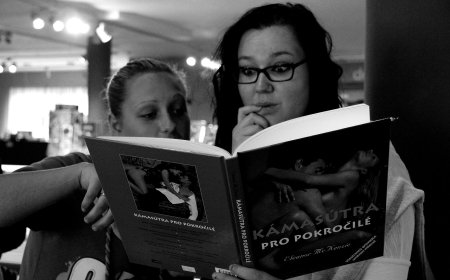Do you really know what Kama Sutra talks about?
Are you sure? Well, if you think it's an old "sex manual", you're wrong. In fact, the masterpiece of the ancient Vatsyayana is much more than just that.

The Kama Sutra is an ancient Indian text that deals with various aspects of human life, including human relationships, love, desire, and sexuality. It was written by the ancient Indian philosopher and sage named Vatsyayana Mallanaga.
Vatsyayana is believed to have lived sometime between the 2nd and 4th centuries CE, though the exact dates are uncertain. He is credited with compiling and composing the Kama Sutra, which is considered one of the most famous and comprehensive ancient texts on human sexuality and eroticism.
The Kama Sutra is not merely a manual on sexual

positions, as it is often popularly misunderstood. It also delves into the art of living a fulfilling and meaningful life, including guidelines on relationships, courtship, marriage, and family life. The text is written in Sanskrit and consists of seven books, each focusing on different aspects of human relationships, love, desire, and sexuality.
Throughout the centuries, the Kama Sutra has been celebrated for its insights into human nature and relationships, making it a significant cultural and literary contribution from ancient India.
Here's a brief perspective on each book:
-
Book 1: Introduction This opening book serves as an introduction to the Kama Sutra. It discusses the purpose of the text and the importance of living a fulfilling and meaningful life. Vatsyayana emphasizes the significance of balance in all aspects of life, including the pursuit of pleasure (kama) alongside the other goals of human existence: dharma (duty/righteousness) and artha (material wealth/prosperity). The book also introduces the concept of the four stages of life (ashramas) in Hindu tradition.
-
Book 2: On Sexual Attraction The second book explores the concept of sexual attraction and the psychology of desire. It delves into the nature of men and women, their differing characteristics, and the art of attracting the opposite sex. The book discusses the importance of understanding human nature and how to engage in courtship and seduction to win a partner's affection.
-
Book 3: On Courtship and Marriage This book deals with the stages of courtship, from expressing interest to marriage. It provides guidance on how to choose a suitable partner, the proper conduct during courtship, and the role of various arts, such as music, dance, and poetry, in the process of wooing a lover. The book also covers the intricacies of marriage, including the responsibilities of a husband and wife.
-
Book 4: On Sexual Union The fourth book is the most well-known and often associated with the Kama Sutra. It focuses on sexual pleasure, describing various sexual techniques, positions, and methods to enhance pleasure and intimacy. Despite its reputation as a guide to sexual positions, this book is also about sexual intimacy as an expression of love and spiritual connection between partners.
-
Book 5: On Acquiring a Wife This book deals with the subject of acquiring a wife, particularly through marriage. It discusses different ways to find a suitable spouse, the importance of compatibility, and the role of physical and emotional attraction in a successful marriage.
-
Book 6: On Courtesans The sixth book explores the world of courtesans, who were skilled in the arts of love and companionship. It provides insights into their lives, roles, and how they were trained in various arts to entertain and engage their patrons.
-
Book 7: On the Means of Attracting Others The final book discusses ways to attract others, not necessarily for sexual purposes but in a broader sense of gaining influence and maintaining harmonious relationships. It covers topics like social etiquette, how to be an attractive and desirable person, and the importance of building friendships and connections.
As you can see, the Kama Sutra is much more than just a manual on sexuality. It encompasses a comprehensive guide to living a fulfilling life and engaging in meaningful relationships with others while embracing pleasure as a natural and valuable aspect of human existence.


































































































